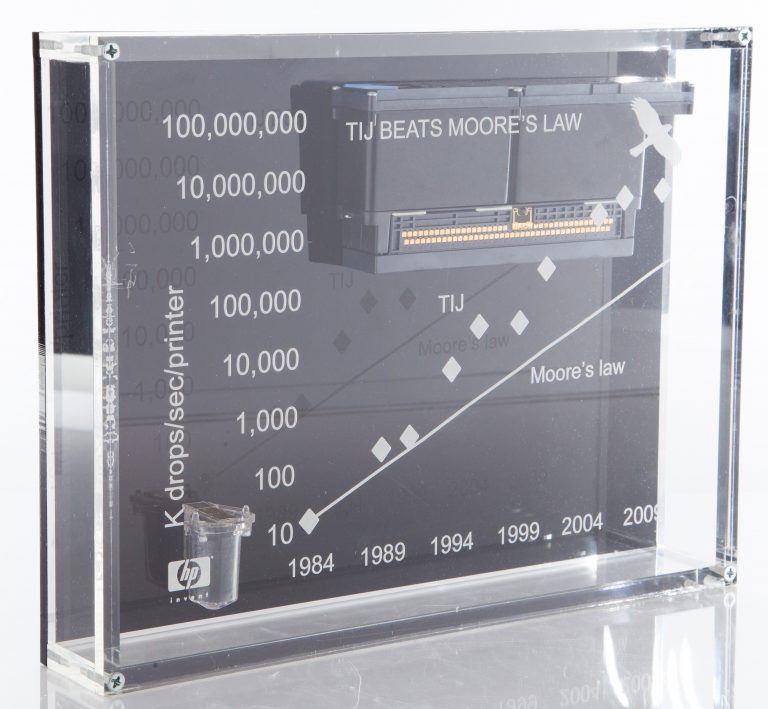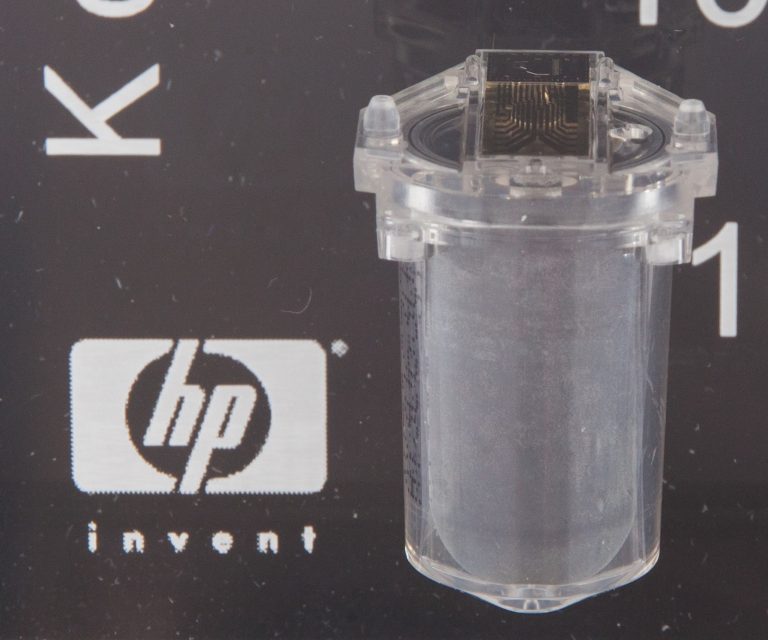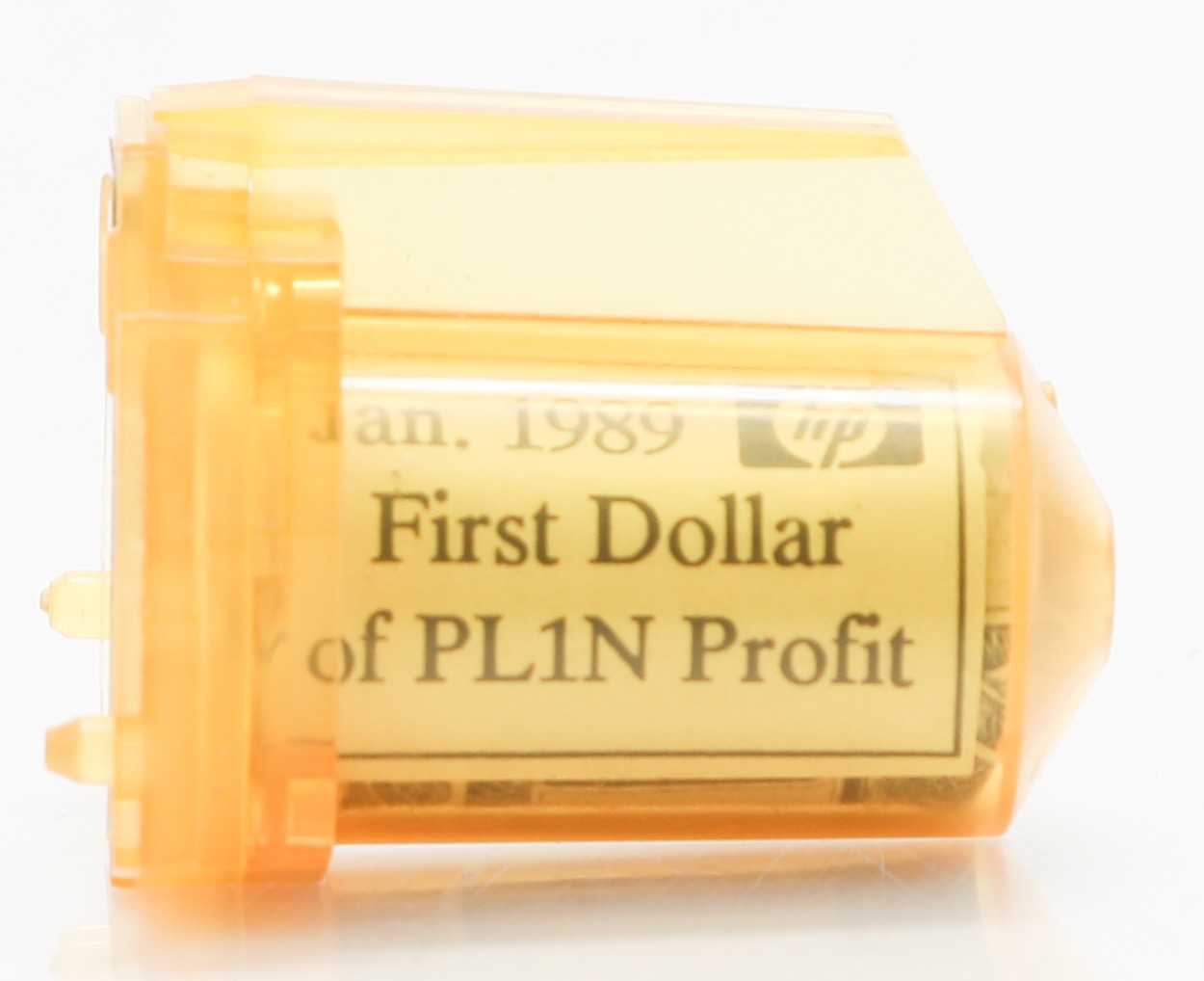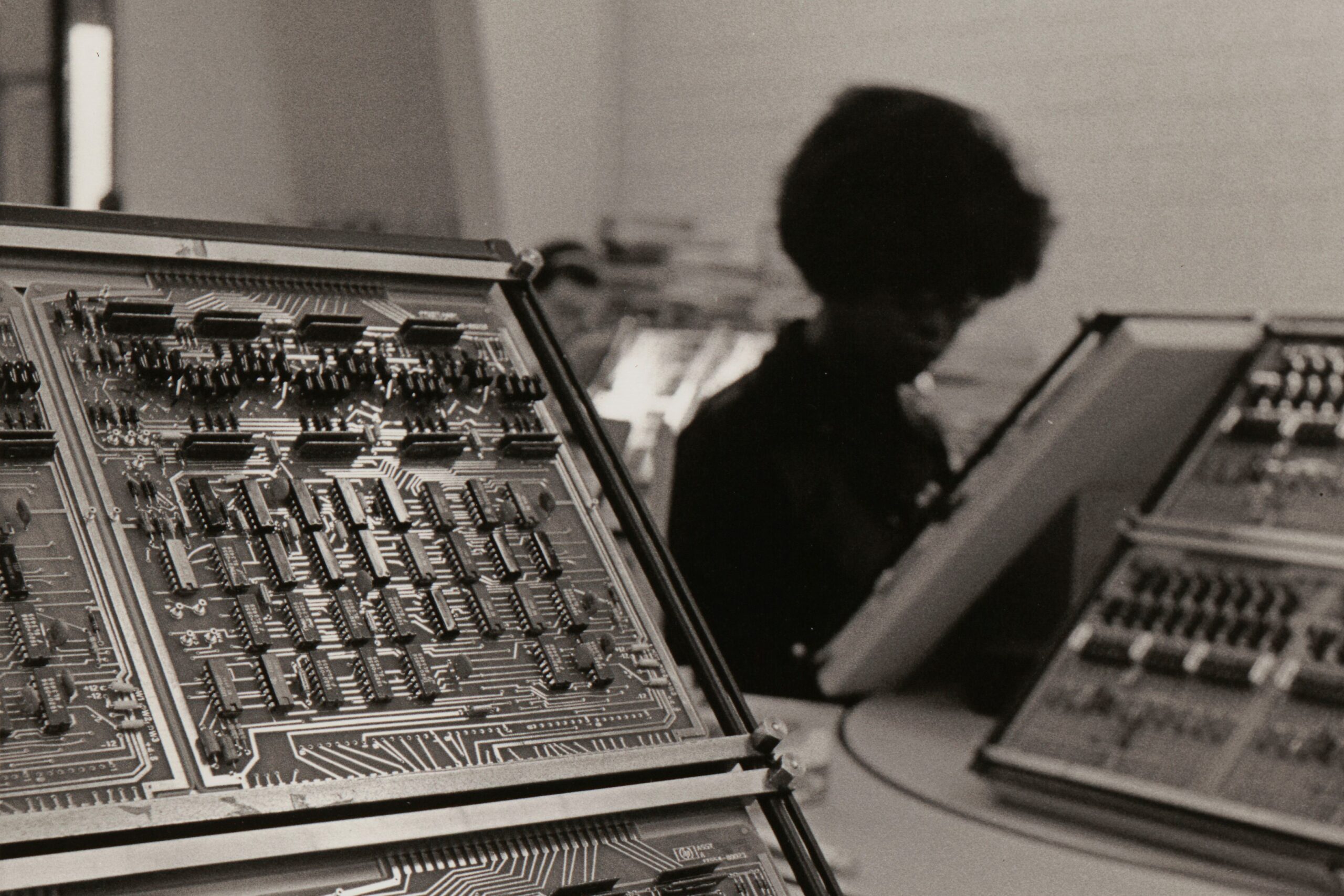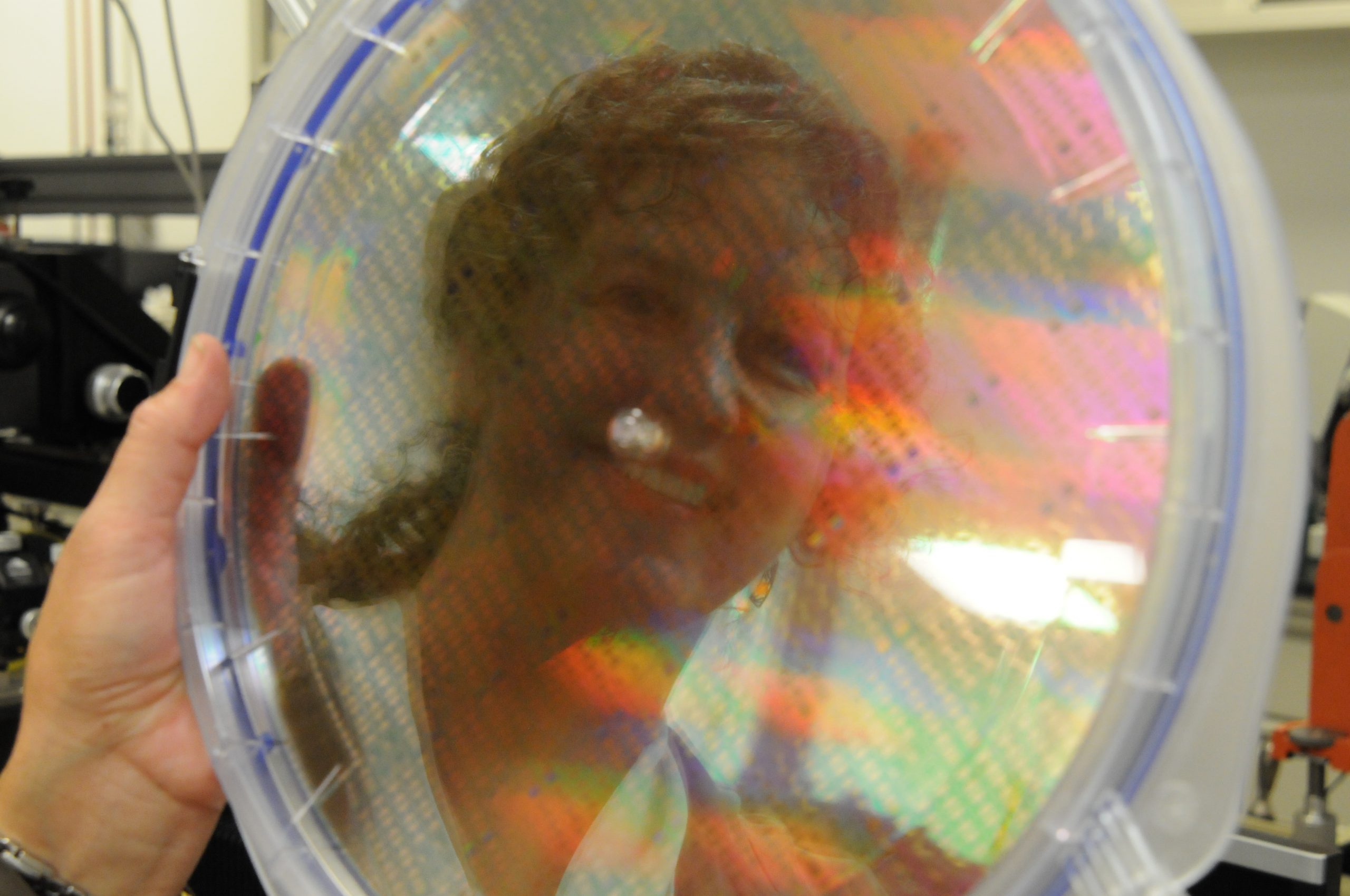- Home •
- In Print: HP Printing & Imaging •
- How HP Broke Moore’s Law
How HP Broke Moore’s Law
Date: 1980s–2000s
In 1965, engineer Gordon Moore posited Moore’s Law, which held that the capacity of integrated circuits would double at a continuous, steady rate. The law became a benchmark for measuring and predicting progress in technology, but when Hewlett-Packard compared its own progress in inkjet printing capacity to the law, the company found that it was more than beating the pace of integrated circuits.
( C ) HPCA

